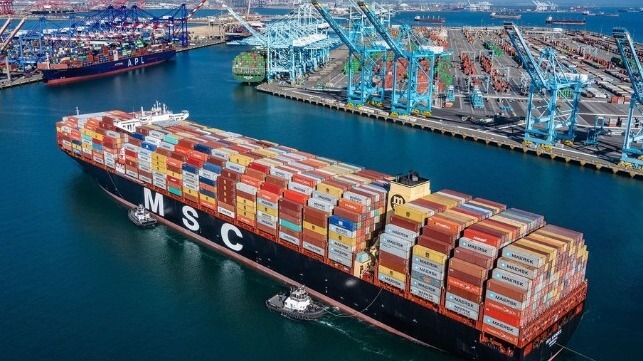Contract Rates Decline Starting Expected Market Normalization

After numerous reports citing declines in container spot rates, the first data showing declines in long-term contract rates are beginning to align with fears of a broadening global recession. Leading industry executives had predicted a normalization of the markets in the later part of 2022, which is being confirmed in the latest reports.
Analysts at both Drewry and Xeneta released fresh data showing that rates are on the decline across most sectors of the shipping industry. A slowing of shipment is seen as contributing to the rate declines to ports on both the East and West Coasts of the United States. Similar declines are also beginning to show on the major routes between China and Europe. Drewry calculates double-digit declines last week on most major shipping routes.
For the first time since January 2022 and for only the third time in the past 21 months, Xeneta similarly reports long-term contract rates declined in September. While the Xeneta Shipping Index, which measures the long-term ocean freight contract market, remains up 112 percent year-over-year, Xeneta reports the index fell by 1.1 percent in September.
“It won’t be the last,” predicts Xenetia saying that market fundamentals suggest the “halcyon days” of ever-increasing rates for carriers may be drawing to a close.
“It had to happen sooner or later,” comments Xeneta CEO Patrik Berglund. “We’ve seen a steady, and at times spectacular, uptick of long-term contracted rates since the early days of the pandemic. This has fueled record-breaking carrier profits, much to the dismay of a financially-stressed shipper community. But, over the past couple of months, clear signs of a market shift have emerged.”
The industry finds itself in a newly emerging cycle. Xeneta points to the declines in volumes on many routes in recent weeks and months, which is helping to decrease the backlogs and port congestion that had built up and creating for the first time in months available space on vessels. The result has been a sudden and sometimes dramatic drop in spot rates despite efforts by carriers to also pull back on capacity. According to Xeneta, the divide between the long- and short-term market is now wider than ever before on many trades, despite record numbers of blank sailings in what would normally be considered a peak season.
In recent days, both MSC and Maersk have announced significant cutbacks on routes. MSC for example wrote to customers yesterday saying, “Due to significantly reduced demand for shipments into the U.S. West Coast during the past weeks, MSC will be taking certain actions in order to strengthen our offered transit times and reliability. We will therefore temporarily suspend our Sequoia service (China and Asia to Long Beach) under 2M until further notice to alleviate existing port congestion.” MSC is transferring shipments from the route to two others services beginning with an October 18 scheduled departure. Around the same time, Maersk is also combining shipments from one of its routes between Asia and the U.S. East Coast.
“Spot rates have been dropping across the board and have, on some key corridors, plunged over the course of the last month as lower demand and easing port congestion take effect,” notes Berglund. “In short, this means the ‘shoe is finally on the other foot’ when it comes to upcoming contract negotiations for Q4 and beyond. The shippers are in the ascendancy while carriers will now be competing to lock-in volumes in the face of lower global demand. Therefore, we expect this month’s relatively marginal decline to pick up pace as the year draws to a close.”
The declines for September varied greatly by market. Xeneta reports for example that the import index fell 1.7 percent this month, while exports were relatively flat. Drops were also seen for both Far East import (1.2 percent) and export (3 percent) benchmarks. The U.S. export index was the only one to remain marginally positive while there was a small decline for U.S. exports.
“There is a very long way for rates to fall before we start talking about any major corrections in line with pre-pandemic levels,” said Berglund. “Of course, it could be a case of ‘the bigger they are the harder they fall’, but the carriers have proven very adept at managing the supply-demand balance in recent times, so nothing’s certain here< he said while concluding that Xentea expects rates to continue to soften in the near future.
The declines, however, also need to be put in the context of the overall market. Long-term contract rates remain up significantly versus a year ago. Xeneta’s data shows that rates for European imports remain up nearly 124 percent while rates for U.S. imports on long-term contracts remain up nearly 180 percent versus one year ago.
While shippers are welcoming the news that rates have leveled off and are starting to decline it also supports the views of carriers including Maersk and Hapag-Lloyd which in their mid-year financial reports predicted that the normalization of the markets would begin in the second half of 2022.
